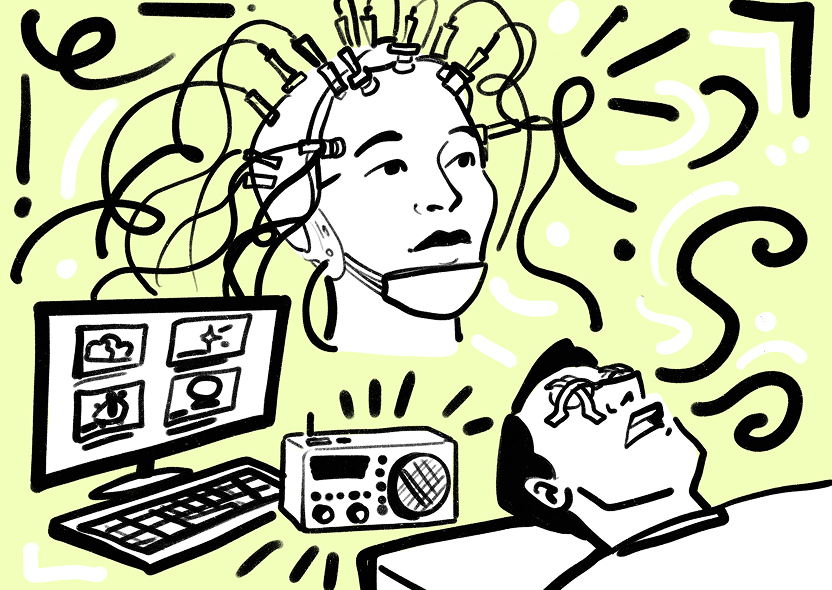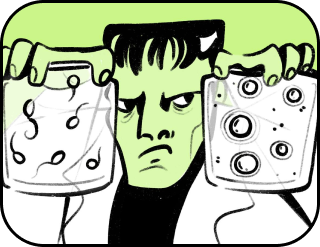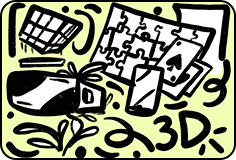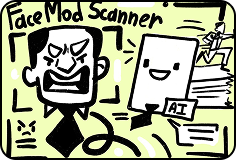Category: Life technologies
How to Test Psychic Abilities
“You are not a psychic until proven otherwise”
Alexandra Swiderskaya
If you don’t believe in miracles, that doesn’t mean they don’t exist. The world is wrapped in magic like a down blanket, and surely somewhere there are people with supernatural abilities. All that remains is to find these people and prove their extraordinary powers through a scientific experiment. Over the past hundred years, thousands upon thousands of such studies have been conducted—unfortunately, without success.
The great illusionist Harry Houdini called everyone who believed in magic “fools.” In our opinion, that’s too harsh a judgment. Yes, no undeniable and reproducible evidence of paranormal abilities has ever been presented. All existing “proof” is either the result of poorly designed experiments or can be easily explained by known psychological effects, statistical errors, or fraud. Yet we haven’t lost hope.
We are scientists and science communicators who have established the Harry Houdini Prize in Russia. Following in his footsteps, we give people the opportunity to test their abilities in various areas. We test claims such as: communicating with spirits, extrasensory perception, dowsing, magnetic properties of the human body, astrological predictions, aura vision, clairvoyance, telepathy, telekinesis, and even levitation.
We are the spiritual heirs and direct successors of the James Randi Prize, which tested psychics in the U.S. from 1964 to 2015. Our goal is to help people critically assess claims of paranormal powers, to ensure objective and transparent testing under strictly controlled conditions, and to dispel honest misconceptions held by “phenomenal” individuals.
We are ready to scientifically test any supernatural claim using a blind or double-blind protocol to eliminate deception, hints, and cognitive biases.
How do we do it? Let’s explain!
Guessing Tests
Suppose we need to test someone claiming to have clairvoyant abilities. The simplest method is with Zener cards—a deck of twenty-five cards featuring five symbols: a circle, a cross, wavy lines, a square, and a star. In the clairvoyance test, the cards are hidden from the participant, who must guess the symbol on each one.
If Zener cards don’t inspire enthusiasm, they can easily be replaced with a coin or regular playing cards.
To eliminate the use of scientific knowledge such as probability theory, it’s crucial to follow a blind protocol—that is, not revealing the results to the participant until the entire series of tests is complete.
You can reproduce the experiment at home. The expected result for a coin toss or playing cards is 50% correct guesses. Got a higher score? Don’t rush to apply for our prize. To confirm paranormal abilities, your results must significantly exceed the baseline level under repeated conditions.
In other words, you’ll need to repeat the test 10–20 times. That’s what we do during preliminary trials. Only after successful completion can you move on to the formal—that is, official—test and compete for the prize. And yes, excuses such as “wrong mood,” “bad energy in the room,” or “skeptics’ negative influence” are not accepted. The ability must manifest on demand during the experiment.
Tests for Predictors
Our prize operates on a volunteer basis, and we are limited in resources, so the rules require all tests to be completed within one day. This restriction prevents us from testing the phenomenon of long-term future prediction.
But if you believe you have “intuitive insights” or “prophetic dreams,” in other words, can see events before they happen, you can easily test yourself—keep a prediction journal and verify each event after it occurs.
This way, you can check the accuracy of your foresight and identify cognitive biases such as hindsight and selective memory.
Of course, the above doesn’t apply to short-term predictions.
We don’t ask those gifted with premonition to show a bank statement—there are more reliable ways to test psychic powers.
For instance, the same coin can be used again. This time, however, the participant must predict the result *before* the coin is tossed. The procedure is simple: the subject records their predicted sequence of outcomes, and after some time—say, one hour later—the coin is tossed and results compared.
Another version of the test involves four phones. The participant must guess which one will ring at a randomly chosen time. Naturally, the researcher doesn’t know the correct answer, and the number is selected by randomization. Experience shows that under strict control, results do not exceed the level of random guessing.
Telepathy Test
“I can read you like an open book”—we’ve heard that claim too. In fact, I can even demonstrate it right now. But first, do me a favor: don’t think about elephants. Not thinking? Well, I can see you are!
In truth, such an ability is easy to test: sit the participant and researcher across from each other. The researcher looks at an image or a word, and the claimant tries to “receive” the same image without any verbal cues.
Zener cards can again be used, or a more advanced version of the test where the “mind reader” has no prior knowledge of the possible images or words. Guessing correctly would only be possible through genuine mind reading. And as you’ve probably guessed, they’ll have to do it not once or twice, but many times. A blind protocol is a mandatory part of the experiment
And yes—stop thinking about elephants, you’re distracting us.

The Ganzfeld Experiment
Modern technology is the best way to make experiments as fair as possible and eliminate even the slightest chance of deception or sensory cues, as well as complaints about the environment or skeptical “energy.”
In the Ganzfeld experiment, the participant is placed in a state of sensory deprivation. Typically, this involves goggles projecting uniform colored light—often red—onto the eyes and headphones playing white noise.
Meanwhile, a “sender” in another room looks at a random image or video and “mentally transmits” it. The participant’s task is to choose the correct image from four options.
Another method of sensory isolation involves virtual reality. In this setup, both “sender” and “receiver” are placed in separate VR sessions, with sensory leaks blocked by software. Despite parapsychologists’ claims of “positive results,” independent replications in both methods show no statistically significant deviations from chance.
Automated Computer Tests
The computer has long replaced the dog as humanity’s best friend, and our case is no exception. Computerized tests are another excellent way to eliminate experimenter influence or cheating.
During testing, the program generates random targets (images, symbols, numbers), records responses, and compiles statistics across sessions.
Those wishing to test their abilities don’t even need special software: platforms like GotPsi or PsychicScience.org offer standardized tests for telepathy, clairvoyance, and precognition.
All data are logged automatically, preventing tampering or selective reporting.
Can you guess the average result of millions of attempts collected by impartial machines? Exactly—still at chance level, 50%.
Neuroimaging
No matter what paranormal powers a person might claim, their manifestation must involve brain activity—meaning reproducible neural patterns should appear during the use of those abilities. Therefore, such activity could, in principle, be recorded through simultaneous electroencephalography (EEG) and functional magnetic resonance imaging (fMRI), which track brain activity with high spatial and temporal precision.
It’s worth noting that our foundation doesn’t conduct such studies. In the future, they might be performed for a prize winner to examine the phenomenon from a medical standpoint and identify objective causes.
Similar experiments have been conducted by colleagues worldwide—roughly two dozen in total. However, to date, no specific neural patterns associated with psychic abilities have been found.
All these methods highlight the key principle of science: not to “believe or disbelieve,” but to verify objectively, reproducibly, and without manipulation. We don’t deny—we invite you to prove. And that’s where the real challenge lies.
The James Randi Foundation conducted tests for more than 50 years; the Houdini Prize has been doing so for 10. Over that time, thousands of applications from psychics, healers, astrologers, mediums, and “bioenergetics” have been processed, and hundreds of preliminary tests performed—yet no one has ever passed even the first stage. It is precisely because such tests have never confirmed psychic abilities that science considers them nonexistent—though it still allows for the possibility

We scatter the fog of guesses with the beam of scientific truth.
Thank you!




